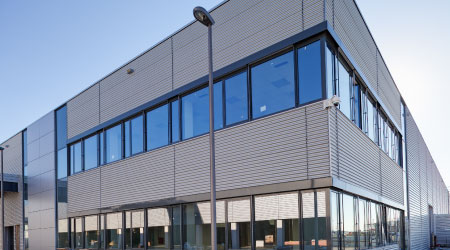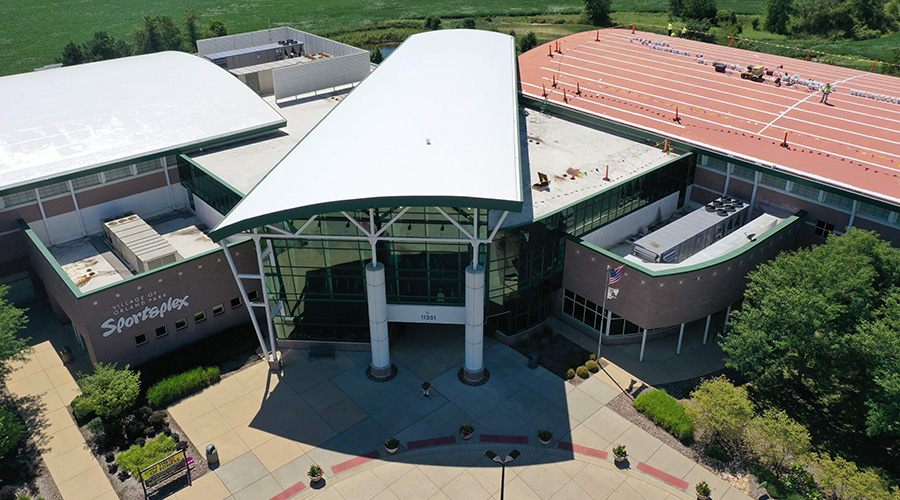Application Methods Changes Having Big Effect on Roofing Industry
Although we are not seeing the sweeping system changes that we witnessed in the past decade, there are some material changes that will have an impact on the roofing industry. Many of these changes are occurring because of environmental issues or to reduce the amount of labor required. The biggest impact is in material application methods. With the substantial decrease in both hot applied and torch applied systems, there has been an increase in adhesive applications and mechanically attached systems.
The biggest change in roof adhesives has been as a result of increased volatile organic compound (VOC) regulations affecting solvent-based adhesives. The current VOC level of adhesives is 20 percent of the total material content. Solvents are primarily added to adhesives to improve their adhesion capabilities. In the older adhesive technologies, low solvent content produced a thick adhesive that was hard to apply. As more solvent was added, the adhesive became lighter and easier to apply.
Adhesive manufacturers have been working since the late '90s on producing quality adhesives that meet the current VOC content regulations. These regulations have led to the increase of water-based adhesives. There has been a significant improvement in low VOC solvent-based adhesives and some U.S. manufacturers can now produce solvent-based adhesives with no VOC content. Some single-ply manufacturers are offering latex/neoprene-bonding adhesives that also are produced with no solvents.
Mechanically attached systems are also becoming more common. One of the primary concerns regarding mechanically attached membranes has been their susceptibility to wind flutter, which creates substantial interior noise and contributes to membrane-fastener separation. A primary reason for the membrane's roof flutter is the width of the sheets.
When mechanically attached systems were first introduced, the most common width of the sheets was five feet. This allowed for sufficient fastening attachment and limited the chance of wind flutter. Over the years, the effort to reduce labor costs led to wider sheets — 10 to 12 feet in width. These expanded widths have contributed to the susceptibility of wind flutter.
In an effort to eliminate roof flutter in these sheets, at least one manufacturer has developed a securement system that heats the existing fastener plates to allow for adhesion of the membrane to the plates without membrane penetration. The system provides more attachment points, which ultimately eliminates roof flutter. The system includes three primary components — the induction welder, a set of magnetic cooling weights and specialty plates that are designed for use with both PVC and TPO membranes. Most of the membrane manufacturers have approved the use of such a system with their membranes.
Other Material Changes
With the advent of impending code changes to include roof reflectivity requirements, some modified bitumen manufacturers have begun manufacturing cap sheets with factory-applied coatings. These sheets eliminate the labor costs of applying the coating in the field while meeting the required reflectivity ratings.
Another emerging technology involves installation of photovoltaics (PVs) on rooftops. Some roofing contractors have begun partnering with solar manufacturers as installers. One of the early drawbacks of these types of applications has been the increased ultra-violet transmission to the roof surface at points adjacent to the PV installations. The enhanced UV has led to delamination of roof membranes and increased heat transmission in the building.
In an effort to eliminate these risks, some material manufacturers have begun offering membranes specifically designed for application of PVs.
There are currently enhanced-UV modified bitumen sheets and 80-mil thermoplastic membranes available for these applications. Another solution is to provide an application of a reflective coating over the existing membrane in these areas.
In an effort to comply with VOC regulations, some roof coating manufacturers have eliminated use of solvents by manufacturing waterborne coatings.
The two most recent entries into this segment of the market are elastomerics and polyvinylidene fluoride (PVDF) polymers. PVDF is a hybrid of latex particles with both fluoropolymer and acrylic resins.
John D'Annunzio, president of Paragon Consultants and Paragon Roofing Technology, Inc., has more than 20 years experience as a consultant on projects around the world. D'Annunzio, a construction consultant specializing in roofing and waterproofing materials application and field performance, has written four books about roofing. He can be reached at john_paragon@ameritech.net.
Related Topics:













